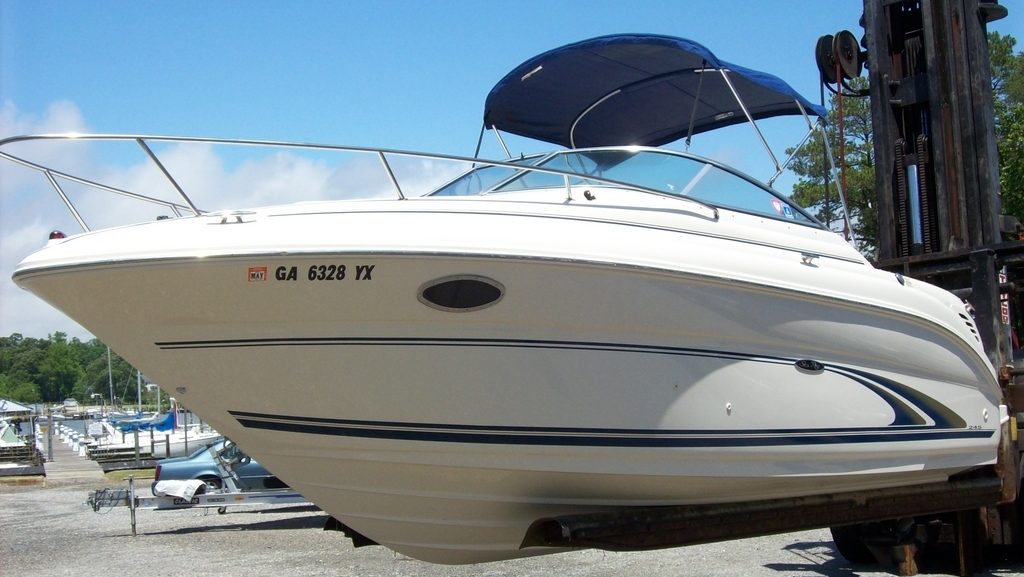To follow up on my previous articles about importing used boats from the United States, I thought I would offer some practical tips to help you through the different steps of the import process. These suggestions are not exhaustive and you should keep in mind that every purchase will have its unique particularities. At the end of the day, buyers should remain vigilant when looking to import “a great deal.”
Pre-purchase surveys
As I have already mentioned, buyers who want to minimize risks and buy a used boat from the U.S. with peace of mind should make sure they get a pre-purchase survey done by a recognized, independent expert. A complete listing of certified surveyors is available from the National Association of Marine Surveyors (NAMS) or the Society of American Marine Surveyors (SAMS).
What should you ask the surveyor to assess? What can you expect them to do for you?
A marine surveyor will first provide you with a verbal report before submitting a signed written report covering the following:
— Identification of the boat and an exhaustive list of the equipment included;
— A fair assessment of how well the navigation and safety equipment works;
— An unbiased option about the integrity of the hull and the boat’s structure;
— The conclusions drawn from a sea trial;
— A subjective opinion about the boat’s general condition;
— Recommendations on repairs needed in the short term;
— A fair assessment of the boat’s market price.
Depending on your agreement with the surveyor, he or she may also attend the mechanical inspection and engine compression tests, which are generally conducted by a technician.
Purchase offers and conditions
Whether you make a purchase offer on your own or via a representative (broker), the offer should generally cover the following points:
— Clearly establish the price offered, the terms of payment, the deposit amount and the outstanding amount.
— Require that the seller guarantee that he or she is the sole owner of the boat for sale, that no third party has a claim on the boat and that there are no outstanding debts (liens) associated with the boat.
— Require that the seller commit to transferring all titles and registration papers on the date of delivery.
— The offer should also be conditional upon the buyer being permitted to have the boat assessed and surveyed at his or her expense and upon the results of these inspections. Should a major problem be detected, the buyer must be permitted to either cancel or modify his or her offer.
Note: If a boat trailer is included in the purchase, it is a good idea to specify its value (the amount you are paying for it) as this will make it easier to get it through Canadian customs.
Shipping and shipping agents
Shipping the boat is obviously an important step – and one that can be quite costly. Before you negotiate transport costs with a shipping agent, you should consider the following:
— Loading costs, generally payable to the marina where the boat is docked;
— The experience and credibility of the shipping company, as well as the different types of equipment used to ship your new boat;
— The shipping company’s insurance coverage in case of accidents or damage caused during shipping;
Note: It’s a good idea to establish good communication with the shipping company during the days that the boat is being shipped.
Purchasing American dollars through a foreign exchange specialist
Financial institutions – especially Canadian banks – will generally allow clients to buy and sell foreign currencies at rates set by the Bank of Canada. However, the bank may charge you a transaction fee of 2-3% of the exchange amount. For example, to buy (or sell) $30,000, you could end up paying a $900 transaction fee – and that is in addition to any differences in the daily exchange rate.
In contrast, foreign exchange specialists will also offer the Bank of Canada rate while charging a significantly lower fee – normally less than 1%. Therefore, to use the same example, the fees charged on $30,000 would total $300, saving you $600.
Canadian customs
Unless you are represented by a customs broker, buyers are now required to be physically present when importing a boat from the United States. Thanks to the North American Free Trade Agreement (NAFTA), no duty is charged on boats built in the U.S., Canada or Mexico. However, you do have to pay GST and PST on the amount listed on the bill of sale.
What documents does the buyer have to present at customs when importing a used boat?
— Passport, driver’s licence and debit card;
— A copy of the bill of sale;
— A copy of the transaction record proving that the boat has been paid for;
— If possible, a copy of the boat’s original sales ad. This document is not absolutely required, but it will help the customs officer verify the selling price;
— The boat’s registration documents (useful, but not always required);
— The registration papers for the trailer (these are required for any vehicle entering Canada).

